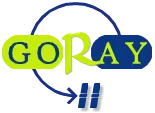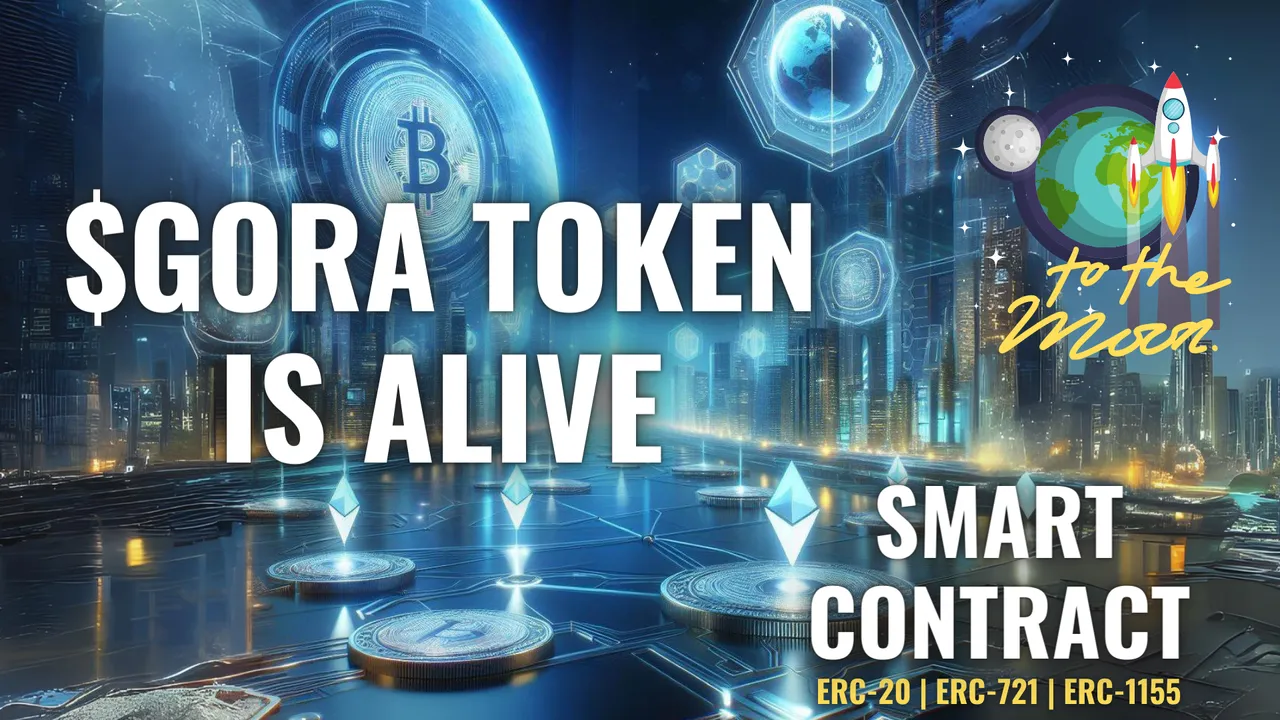

NFT & CONTRATOS INTELIGENTES
A menudo lo digo: no soy fan del arte, al menos no del tipo de arte asociado a la pintura, el dibujo, las esculturas e incluso, el mismo arte digital. Puedo admirarlo, sí, pero no me decanta; digamos que no sé apreciarlo tal y como lo hago con otras expresiones artísticas como la fotografía, el arte literario, el teatro o la música. Tal vez por esa razón no siento un especial interés por testear herramientas o aplicaciones de generación de imágenes, aunque sea fan de la inteligencia artificial, que lo soy. Dígamos que según mis intereses y aficiones apunto a lo que realmente me cautiva. Y eso mismo me pasa, por ejemplo, con plataformas descentralizadas enfocadas en el arte digital representado mediante tokens únicos y no fungibles, como el caso de los NFTs.
Sin embargo, los NFTs, como tokens no fungibles, no se limitan al arte digital en una galería o showroom digital; los casos de uso de los NFTs se extienden a todos los activos digitales que sean únicos y que se diferencien de otros, bien sea por su valor, características o propiedades. Estos se representan como un token en la cadena de bloques, un token único que representa tanto la propiedad como la autenticidad de un activo digital. Lo mencionaba recientemente: existen NFT que representan una propiedad transferible y otros que no, como el caso de los SBT, que representan propiedades intangibles no intercambiables.
Hay muchísimos casos de uso, desde el arte digital, la música, publicaciones escritas, fotografías, hasta el caso de bienes reales asociados a una propiedad digital. En cualquier caso, al hablar de NFTs, es decir, de tokens no fungibles, nos estamos refiriendo a protocolos y estándares como el ERC-721, diseñado para representar en la cadena activos digitales que sean únicos, indivisibles y no intercambiables. Luego, también hay otros estándares como el ERC-1155, que combina ambos mundos y pueden ser fungibles y no fungibles según se defina en el contrato inteligente asociado.
! [ENGLISH VERSION]
NFT & SMART CONTRACT
I often say it: I'm not a fan of art, at least not the type of art associated with painting, drawing, sculptures, and even digital art itself. I can admire it, yes, but it doesn't sway me; let's say I don't appreciate it as much as I do with other art forms like photography, literary art, theater, or music. Maybe that's why I don't feel a special interest in testing image generation tools or applications, even though I'm a fan of artificial intelligence, which I am. Let's say that according to my interests and hobbies, I aim for what truly captivates me. And the same thing happens, for example, with decentralized platforms focused on digital art represented through unique and non-fungible tokens, such as the case of NFTs.
However, NFTs, as non-fungible tokens, are not limited to digital art in a digital gallery or showroom; the use cases of NFTs extend to all digital assets that are unique and differ from others, either by their value, characteristics, or properties. These are represented as a token on the blockchain, a unique token that represents both the ownership and authenticity of a digital asset. I mentioned recently: there are NFTs that represent a transferable property and others that don't, like the case of SBTs, which represent non-exchangeable intangible properties.
There are many use cases, from digital art, music, written publications, photographs, to the case of real assets associated with a digital property. In any case, when talking about NFTs, that is, non-fungible tokens, we are referring to protocols and standards like ERC-721, designed to represent in the chain digital assets that are unique, indivisible, and non-exchangeable. Then, there are also other standards like ERC-1155, which combines both worlds and can be fungible and non-fungible depending on how it's defined in the associated smart contract.

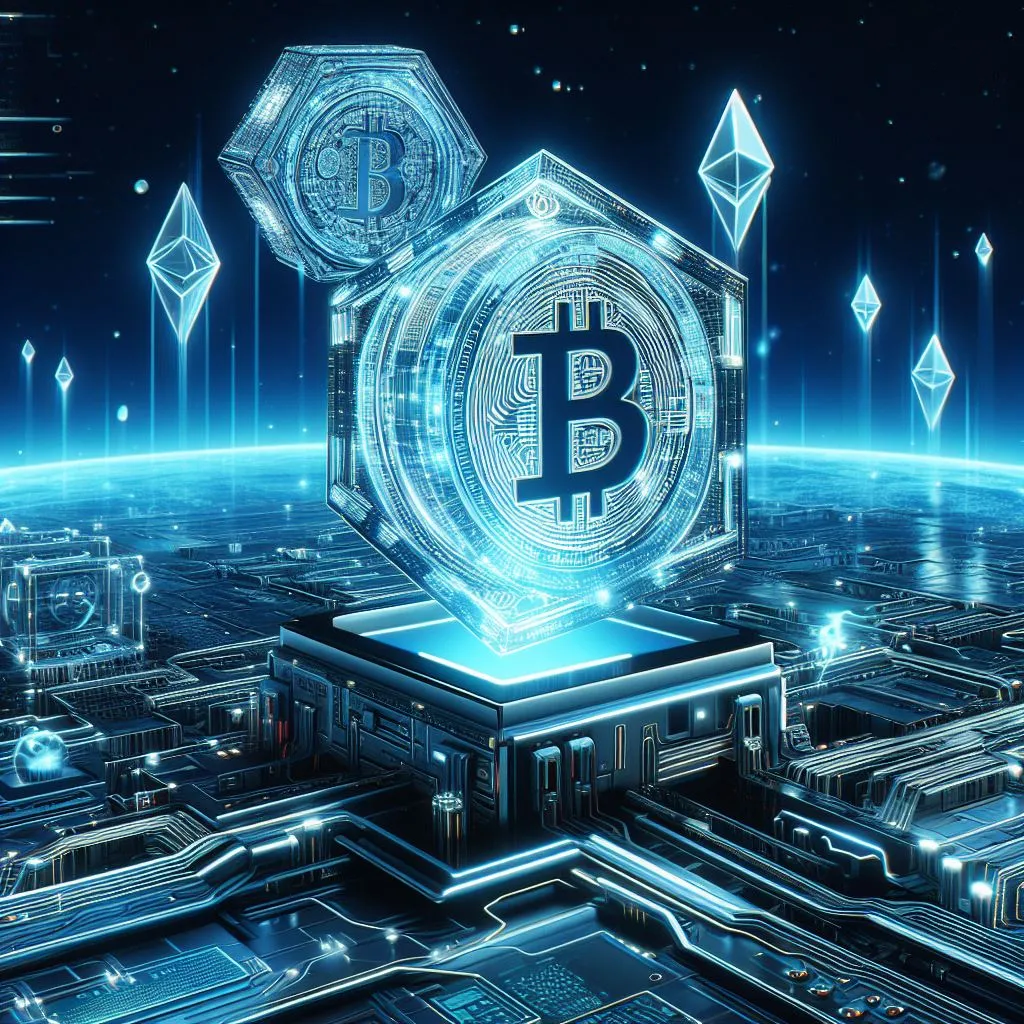

ERC-721 vs. ERC-1155
¿Por qué querría uno u otro? Bueno, veámoslo así, si estamos vendiendo un terreno o un inmueble, el título de propiedad de ese terreno debe ser único ¿cierto?. Pero si en cambio, lo que estoy vendiendo es una colección de libros, entonces puedo tener “n” cantidad de ejemplares por edición. Pues bien, en el primer caso, tendríamos desplegar un smart contract bajo el estándar ERC-721, y en el segundo, un smart contract ERC-1155.
¿Entonces, tengo que saber todo esto para crear un NFT y desplegar un contrato? No necesariamente; básicamente debes saber lo que quieres y cómo lo quieres. En la mayoría de las plataformas ni enteras de todo lo que hay detrás del proceso. Basta con decirle si será uno o si será una colección y automáticamente despliega el smart contract que corresponda, como Zora, Rarible, Mirror, etc. Por supuesto, como dice el dicho, “el que sabe es que el goza”, y hay plataformas en las que puedes tener el control según cada estándar, como el caso de thirdweb.
A continuación, les comparto mi primer NFT en la plataforma Zora.co. Se trata de un token ERC-721, una pieza única, generada gracias a las bondades de la inteligencia artificial. Luego, pueden ver un siguiente ejemplo en la plataforma Mirror.xyz, en la que es posible crear una colección bajo el estándar ERC-1155.
NFT | ERC-721
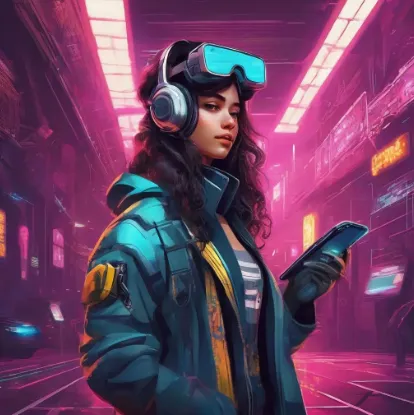
NFT | ERC-1155
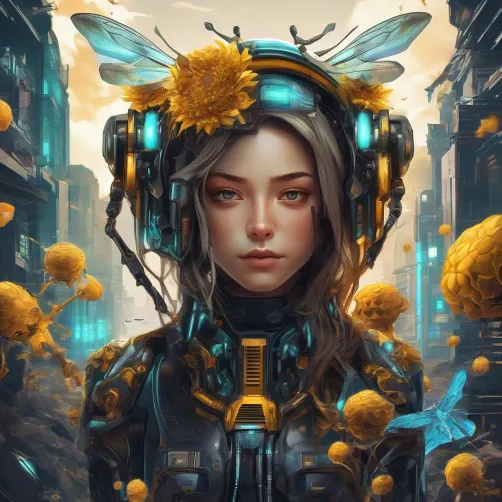
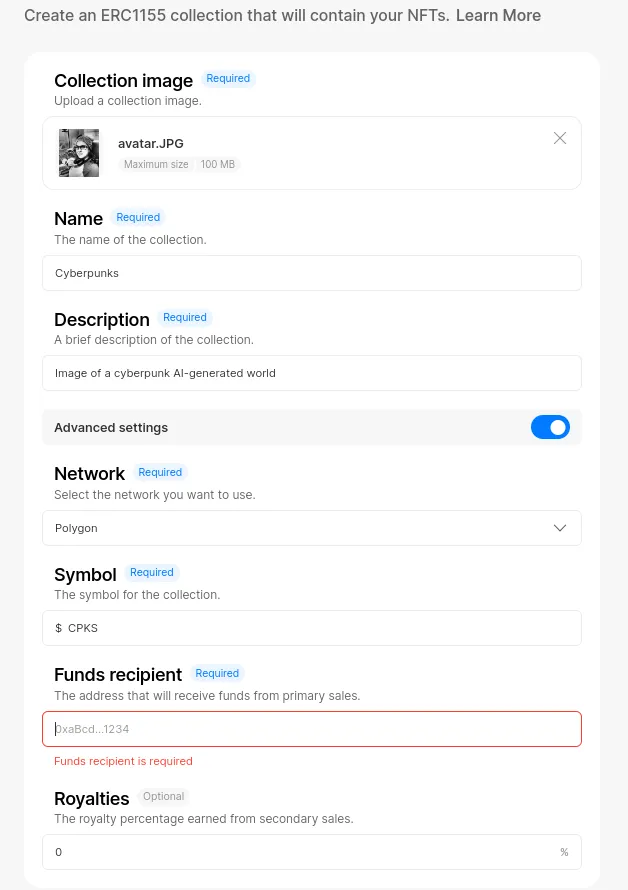 |
 |
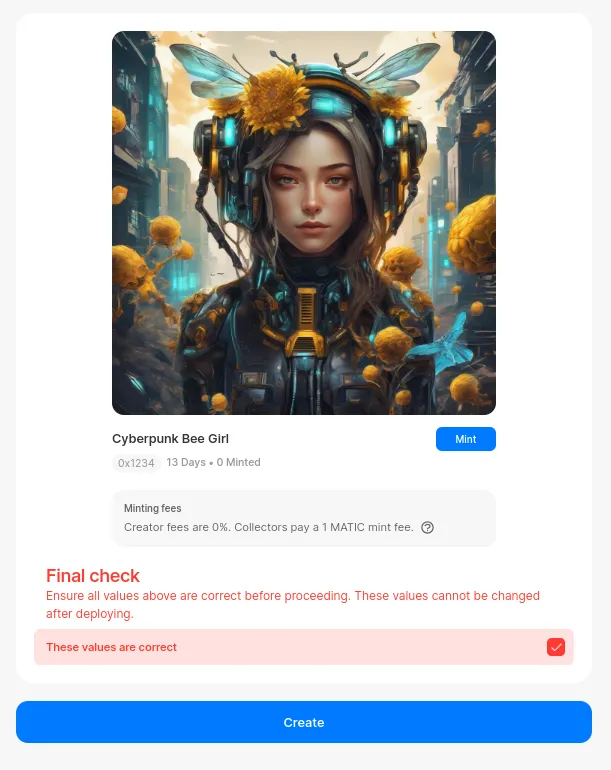 |
! [ENGLISH VERSION]
ERC-721 vs. ERC-1155
Why would you want one or the other? Well, let's see it this way: if we're selling a plot of land or a property, the title of ownership for that land must be unique, right? But if, on the other hand, what I'm selling is a collection of books, then I can have "n" number of copies per edition. So, in the first case, we would have to deploy a smart contract under the ERC-721 standard, and in the second, an ERC-1155 smart contract.
So, do I have to know all this to create an NFT and deploy a smart contract? Not necessarily; basically, you need to know what you want and how you want it. In most platforms, you don't need to understand everything behind the process. You just need to say whether it will be one or a collection, and it automatically deploys the corresponding smart contract, like Zora, Rarible, Mirror, etc. Of course, as the saying goes, "knowledge is power," and there are platforms where you can have control according to each standard, like thirdweb.
Below, I'm sharing my first NFT on the Zora.co platform. It's an ERC-721 token, a unique piece, generated thanks to the benefits of artificial intelligence. Then, you can see another example on the Mirror.xyz platform, where it's possible to create a collection under the ERC-1155 standard.

ERC-20 | TOKEN GORA
Pues bien, ya que estamos hablando de tokens, vamos a mencionar uno que si bien nada tiene que ver con los NFTs, pues es su antítesis, sí que tiene que ver con este cripto mundo. Me refiero a los tokens ERC-20, las moneditas que engalanan nuestras wallets. Los tokens ERC-20 sí son tokens fungibles, es decir, que cada uno es igual al otro, y por ende, pueden intercambiarse entre sí si tienen el mismo valor.
Para términos de esta publicación, desplegué un contrato inteligente para crear 1,000,000 de tokens $GORA, que de momento no tienen ningún valor, pero que servirían para muchos propósitos futuros, y que, según la confianza de la comunidad en un token, podría llegar a alcanzar una capitalización de mercado importante. Así, mis amigos, es como nacen las memecoins.🤣

$GORA to the moon xD
! [ENGLISH VERSION]
ERC-20 | $GORA TOKEN IS ALIVE
Well, since we're talking about tokens, let's mention one that, although it has nothing to do with NFTs, it does have to do with this crypto world. I'm referring to ERC-20 tokens, the cryptocurrencies that grace our wallets. ERC-20 tokens are indeed fungible tokens, meaning each one is equal to the other, and therefore, they can be exchanged if they have the same value.
For the purpose of this post, I deployed a smart contract to create 1,000,000 $GORA tokens, which currently have no value, but could serve many future purposes, and which, depending on the community's trust in a token, could reach a significant market capitalization. So, my friends, this is how memecoins are born.🤣$GORA to the moon xD

Diseño de miniatura en Canva.com.
Imágenes generadas por la IA Dall-E 3 integrada en Bing. Diseño de miniatura en Canva.com.
Translation: ChatGPT.
Thumbnail design on Canva.com.
Images generated by the Dall-E 3 AI integrated with Bing.Thumbnail design on Canva.com.

